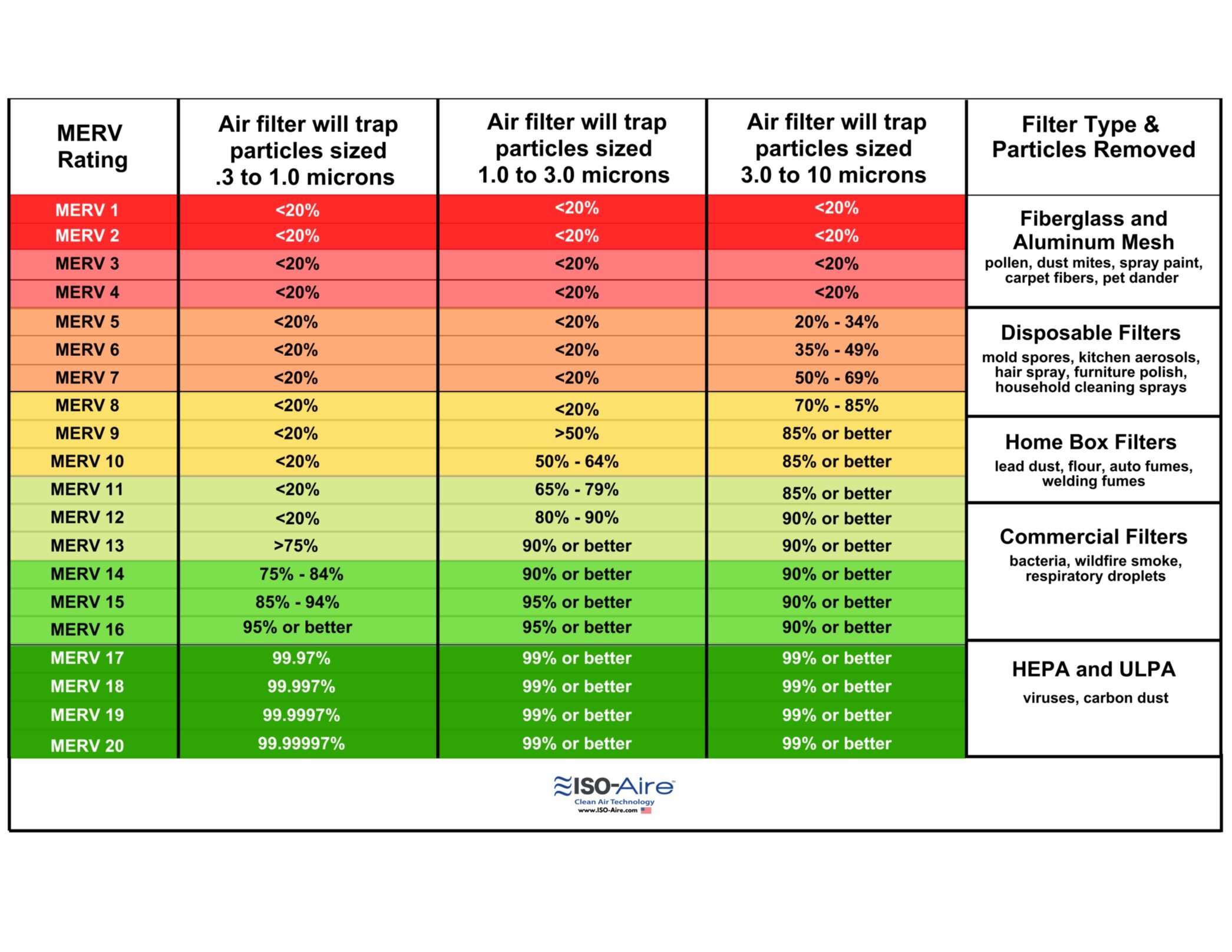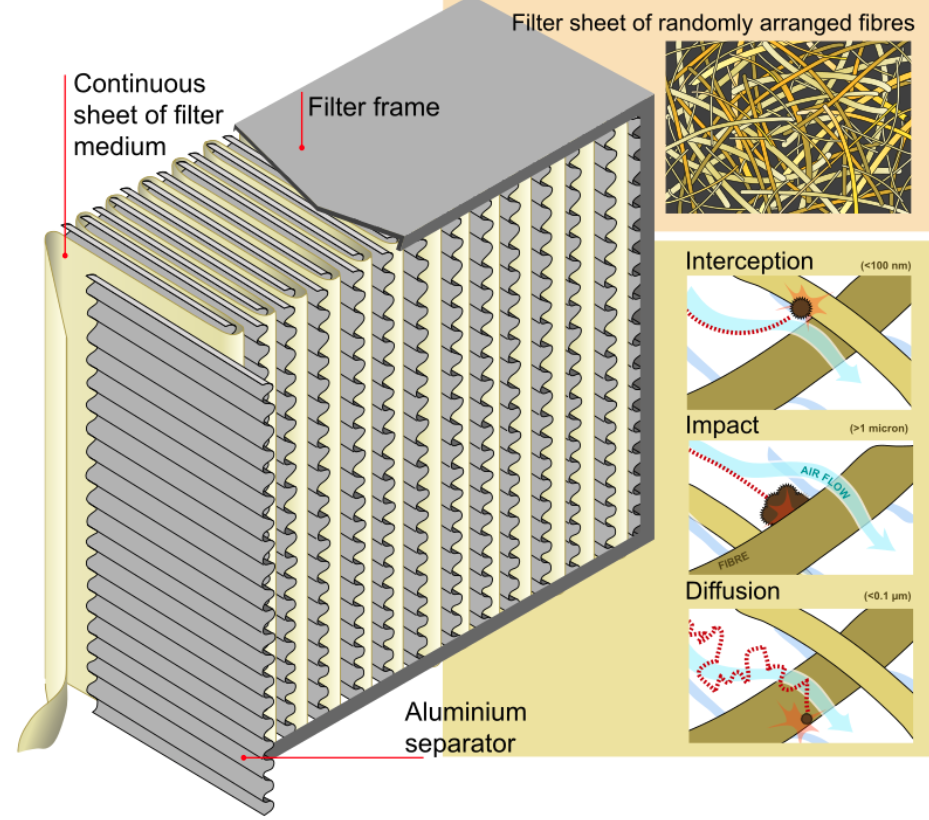A HEPA filter is not like any regular air filter you typically put in your home. HEPA filters are pleated mechanical air filters that have a considerable thickness in order to capture the particulates. The pleats create a mat of fibers that are randomly arranged. The random, dense arrangement of fibers in the HEPA filter help to catch a range of particle sizes. As air particles pass through the air filter, they are caught by three mechanisms: diffusion, interception, and impaction.

Diffusion occurs in a HEPA filter when the gas molecules that are smaller than 0.1 microns in size collide with each other and are delayed in passing through the filter. The delay will make it more likely for the next two mechanisms to occur for those smaller particles. Interception is when particles moving along the air stick to a fiber. Impaction, the third mechanism, is when the larger air particles embed directly into the fibers themselves.

In an attempt to extend the usage life of a HEPA, a pre-filter can be included in the set-up which helps to remove the larger particles, leaving the finer-sized particles to be caught by the HEPA filter. We know this at ISO-Aire, and all of our commercial air purifier units that we offer come with MERV-8 pre-filters to extend the life of the HEPA filter.

